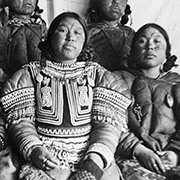CANADA HISTORY
Union of the Canadas

The Union of the Canadas in February 1841 was a pivotal moment in Canadian history, marking the consolidation of Upper and Lower Canada into the single entity of Canada, composed of Canada West (formerly Upper Canada) and Canada East (formerly Lower Canada). This political union was not just a geographic merger but a complex arrangement with far-reaching implications for governance, economics, and cultural relations, particularly between the English and French populations. The union was part of a larger effort to stabilize the colonies after the Rebellions of 1837-38 and to address the growing economic and political challenges faced by both regions.
The capital of this new Union was established in Kingston, where the Legislative Assembly met in a large building originally built as a hospital but never used for that purpose. The choice of Kingston was symbolic of the hope that this newly formed political entity could overcome the internal divisions that had characterized both Upper and Lower Canada. The Assembly itself was evenly divided, with 42 representatives each from Canada East and Canada West, even though Canada East had a larger population, predominantly French-speaking, with about 200,000 more people than Canada West. This equal representation was designed to maintain a balance of power, particularly to ensure that the English-speaking minority in Canada East did not feel overrun by the French majority. However, this imbalance sowed the seeds for future tensions, as it created a sense of inequity in political representation for French Canadians.
One of the most contentious aspects of the new Union was the decision to conduct all business in English, following the recommendations of the Durham Report, which had been instrumental in shaping the Union. Lord Durham, who was sent to investigate the causes of the rebellions in Upper and Lower Canada, believed that French Canadians needed to be assimilated into English-speaking, British culture for peace and stability to be maintained. The introduction of English as the sole language of governance was intended to gradually erode the influence of French culture in political affairs. The plan was that, over time, the growing English-speaking population in Canada West, coupled with its faster rate of development, would overwhelm the French-speaking population of Canada East, effectively assimilating them into a unified British Canadian society.
Economically, the Union was also seen as a way to address the growing debt crisis in Upper Canada. Upper Canada’s rapid expansion and infrastructure development had led to financial mismanagement and significant debt, much of it incurred by projects that were not essential but served the interests of the ruling elite, particularly the Family Compact. These powerful business interests often prioritized their own enrichment over the public good, contributing to the financial instability of the province. In contrast, Lower Canada had been more conservatively managed, with its more established society and slower, more stable growth, leading to a healthier financial situation. The Union was, in part, a political solution to bail out Upper Canada by merging its debt with the more solvent Lower Canada. This economic arrangement helped ease Upper Canada's financial burden, but it also planted the seeds for future tensions, particularly when the question of Confederation arose two decades later. The financial disparities between regions would become a recurring theme in debates about how the colonies should be structured.
The first election under the Union in 1841 revealed the deep divisions that still existed between English and French populations. Intimidation tactics were used against French Canadian voters in an attempt to suppress their political power. Polling booths were often placed at inconvenient distances from French communities, closer to English population centers, which discouraged many French Canadians from voting. This practice highlighted the persistent efforts by some English factions to weaken French political influence, in line with the broader goal of assimilating French Canadians into English-speaking, British-dominated governance.
The Union of the Canadas was not merely a political merger but a testing ground for how a region with deep cultural, linguistic, and economic divides could function under a shared government. The arrangement forced both Canada West and Canada East to learn how to navigate regional and federated issues, as well as balance the interests of a diverse population that included French and English speakers, merchants, religious groups, and various political factions. This period set the stage for the broader discussions of Confederation that would emerge in the 1860s, as the political and cultural challenges of managing a diverse and divided society in a single government became increasingly apparent.
The Union was a crucial step in Canada’s political evolution, serving as a laboratory for experimenting with the balance of power between regional and federal interests, and between French and English communities. The lessons learned from this Union would directly influence the formation of the Canadian Confederation in 1867, where a more nuanced federal system was adopted to allow for regional autonomy while maintaining national unity. The Union of the Canadas, with its successes and failures, played a foundational role in shaping the political landscape of modern Canada and underscored the complexities of building a nation that could accommodate the diverse needs and aspirations of its people.
Cite Article : www.canadahistory.com/sections/documents




